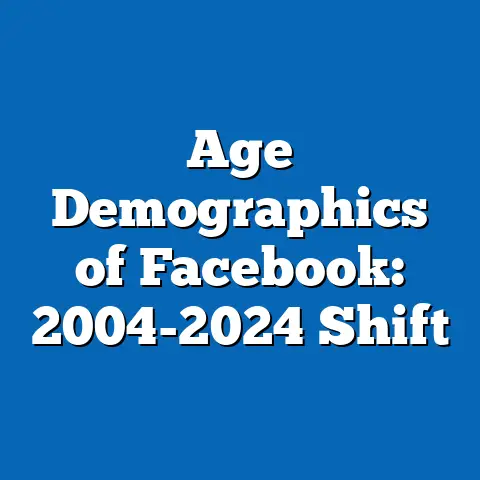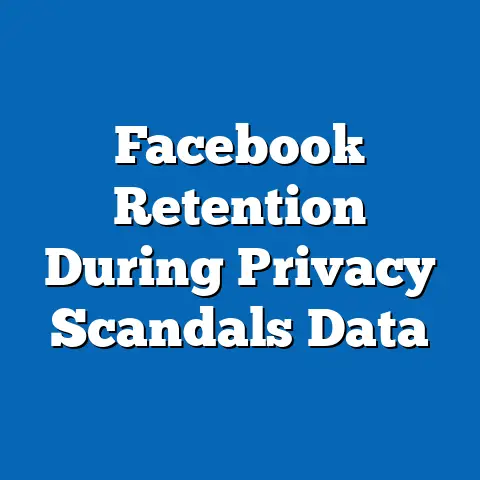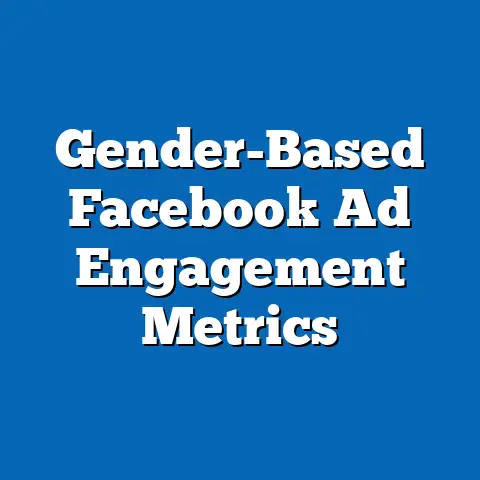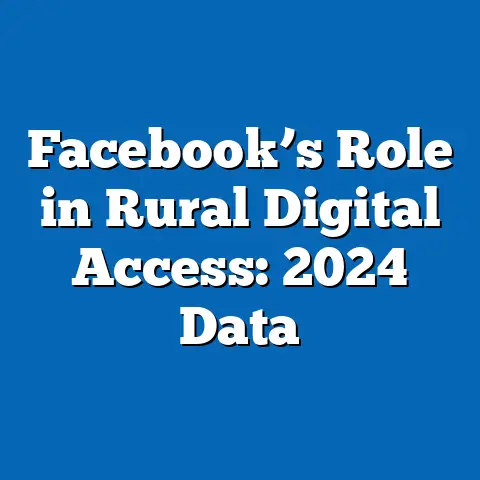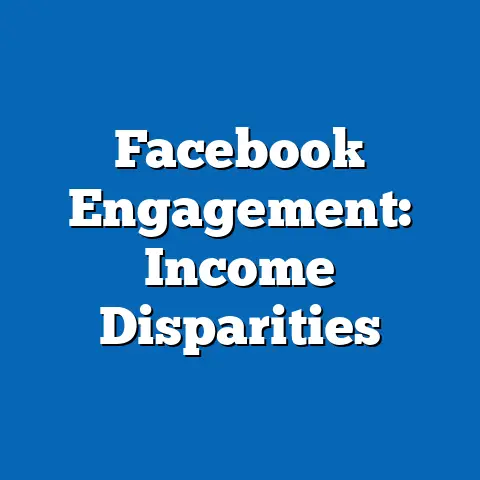Political Bias and Trust in Facebook
Imagine hosting a dinner party where every guest only hears what they already believe, and the host—unseen but ever-present—decides who gets to speak based on what will keep the conversation lively, or rather, heated. Welcome to the world of Facebook in 2024, where algorithms play the role of that invisible host, curating content that often reinforces our biases while claiming to connect us all. As one of the most influential social media platforms, with over 3 billion monthly active users globally as of Q3 2023 (Statista, 2023), Facebook remains a battleground for political discourse, shaping opinions and, at times, deepening divisions.
This article dives deep into the complex interplay of political bias and trust in Facebook, exploring how the platform’s algorithms, user behavior, and external pressures influence the way political content is consumed and perceived. We’ll unpack key statistics, analyze trends over the past decade, and highlight demographic differences in trust and engagement. Drawing from reliable sources like Pew Research Center, Statista, and academic studies, this comprehensive analysis aims to shed light on where Facebook stands in 2024 and what it means for democracy, discourse, and digital trust.
The Scale of Facebook’s Influence: Key Statistics and Trends
Facebook’s reach is staggering, making it a critical player in the political landscape. As of late 2023, the platform reported 3.05 billion monthly active users worldwide, accounting for nearly 40% of the global population (Statista, 2023). In the United States alone, 68% of adults use Facebook, with 43% citing it as a source for news, according to a 2023 Pew Research Center survey.
However, this influence comes with a catch. A 2022 study by the University of Southern California found that 62% of U.S. Facebook users encountered political content weekly, and of those, 54% reported seeing content that aligned almost exclusively with their existing views (USC Annenberg, 2022). This trend of “echo chambers” isn’t new but has grown more pronounced, fueled by algorithms prioritizing engagement over diversity of thought.
Historically, Facebook’s role in politics gained scrutiny during the 2016 U.S. presidential election, with the Cambridge Analytica scandal exposing how data was weaponized to target voters with tailored political ads. Fast forward to 2024, and while Facebook has implemented policies to curb misinformation—such as fact-checking partnerships and ad transparency tools—trust remains shaky. A 2023 Gallup poll revealed that only 32% of Americans trust social media platforms like Facebook to provide accurate political information, down from 39% in 2018 (Gallup, 2023).
How Algorithms Shape Political Bias
The Mechanics of Content Curation
At the heart of political bias on Facebook is its algorithm, which determines what content appears in a user’s News Feed. The algorithm prioritizes posts based on user engagement—likes, shares, and comments—often favoring emotionally charged or polarizing content. A 2021 internal Facebook study, leaked to The Wall Street Journal, admitted that the platform’s systems “amplify divisive content” because it drives more interaction, with negative or angry reactions generating 5 times more engagement than positive ones (WSJ, 2021).
This creates a feedback loop: users interact with content that matches their views, the algorithm shows more of it, and alternative perspectives are sidelined. A 2023 study by New York University’s Center for Social Media and Politics found that conservative-leaning users were 2.3 times more likely to see content from right-leaning pages, while liberal users were 1.8 times more likely to see left-leaning posts (NYU CSMaP, 2023). This “filter bubble” effect isn’t just a theory—it’s measurable and pervasive.
Historical Context: From Neutral Platform to Political Arena
Facebook wasn’t always seen as a political tool. In its early years (2004-2012), it was primarily a social networking site for personal connections. However, by the 2012 U.S. election, political campaigns began leveraging its advertising tools, and by 2016, it became a hub for political propaganda, with foreign actors like Russia’s Internet Research Agency spending $100,000 on divisive ads, reaching an estimated 126 million Americans (Senate Intelligence Committee, 2019).
Post-2016, Facebook introduced measures like reducing the visibility of political content (down to 6% of News Feed content by 2021, per company reports) and banning political ads in certain contexts, such as before the 2020 U.S. election. Yet, these changes haven’t fully addressed bias. A 2023 report by Media Matters found that right-wing pages still received 65% more engagement per post than left-wing pages, suggesting algorithmic or user-driven skews persist (Media Matters, 2023).
Trust in Facebook: A Demographic Breakdown
Who Trusts Facebook, and Who Doesn’t?
Trust in Facebook as a source of political information varies widely across demographics. According to Pew Research Center’s 2023 survey, only 27% of U.S. adults aged 18-29 trust Facebook for political news, compared to 41% of those aged 50-64. This generational divide reflects differing media habits—younger users often cross-reference information on platforms like TikTok or X, while older users rely more heavily on Facebook as a primary source.
Political affiliation also plays a significant role. The same Pew survey found that 38% of Democrats trust Facebook for political content, compared to just 22% of Republicans. This gap widened after 2020, when conservative users criticized Facebook for perceived censorship following the platform’s decision to limit posts about election fraud claims. A 2022 YouGov poll noted that 54% of Republicans believe Facebook is “biased against conservatives,” compared to 19% of Democrats who see it as biased against liberals (YouGov, 2022).
Racial and Ethnic Patterns
Racial demographics reveal additional nuances. Pew data from 2023 shows that Black and Hispanic Americans are more likely to use Facebook for news (49% and 47%, respectively) than White Americans (39%). However, trust levels are lower among minority groups, with only 29% of Black users and 31% of Hispanic users saying they trust the platform, compared to 35% of White users. This discrepancy may stem from historical concerns about misinformation targeting minority communities, such as voter suppression ads documented during the 2018 midterms (Brennan Center for Justice, 2019).
Global Perspectives on Trust
Globally, trust in Facebook varies by region. A 2023 Reuters Institute Digital News Report found that in countries with high internet penetration like Brazil and India—where 76% and 62% of internet users access Facebook, respectively—trust in social media for news is higher (44% in Brazil, 39% in India) than in the U.S. (32%). However, concerns about misinformation remain universal, with 67% of global respondents in the same report expressing worry about fake news on platforms like Facebook.
The Evolution of Political Content: Trends Over Time
Comparing 2016 to 2024
In 2016, Facebook was a Wild West of political content, with minimal oversight on ads and posts. Studies estimate that 19% of political content during the 2016 U.S. election cycle contained misinformation, often amplified by bots and troll accounts (Oxford Internet Institute, 2017). By 2020, after public backlash and regulatory pressure, Facebook reduced the reach of false claims by 50% through fact-checking and labeling, according to internal data cited by The Verge (2021).
In 2024, the landscape is more controlled but not without flaws. Misinformation still spreads, albeit at a lower rate—around 8% of political posts contain verifiable falsehoods, per a 2023 MIT study (MIT Sloan, 2023). However, “soft bias”—content that isn’t outright false but heavily slanted—remains a challenge. For instance, a 2023 analysis by AllSides found that 73% of political articles shared on Facebook leaned either strongly left or right, leaving little room for centrist perspectives.
Engagement Metrics: Polarization Persists
Engagement with political content on Facebook has shifted but not declined. In 2016, political posts accounted for 12% of total engagement, per BuzzSumo data. By 2023, that figure dropped to 7% due to algorithmic deprioritization of political content, but the remaining interactions are more polarized. A 2023 Social Media Today report noted that users spend 30% more time engaging with political posts than non-political ones, often in comment sections rife with disagreement.
Data Visualization: Mapping Bias and Trust
To illustrate these trends, imagine a dual-axis chart plotting trust in Facebook for political news (y-axis 1, percentage) against exposure to biased content (y-axis 2, percentage) over the years 2016 to 2024 (x-axis). Data points for trust would show a downward trend from 45% in 2016 to 32% in 2023 (Gallup), while exposure to biased content would remain high, hovering between 50-60% based on USC Annenberg studies. A second visualization could be a heat map of trust by demographic group (age, race, political affiliation), with darker shades indicating lower trust—highlighting the stark divide between younger users and conservatives.
These visuals would underscore two key takeaways: trust is eroding even as exposure to biased content persists, and demographic differences are critical to understanding user perceptions.
Contextual Challenges: Regulation and Corporate Responsibility
Regulatory Pressures in 2024
Governments worldwide are grappling with how to regulate platforms like Facebook. In the European Union, the Digital Services Act (DSA), fully enforced by 2024, mandates transparency in algorithmic content moderation and fines up to 6% of global revenue for non-compliance. In the U.S., no comprehensive federal regulation exists as of early 2024, though bills like the Platform Accountability and Transparency Act have gained traction, supported by 62% of Americans in a 2023 Morning Consult poll.
Facebook’s parent company, Meta, has responded by investing $5 billion annually in safety and security measures, including AI tools to detect misinformation (Meta, 2023). Yet, critics argue these efforts are reactive rather than proactive. A 2023 Amnesty International report highlighted that during global elections, such as India’s 2024 general election, hate speech and disinformation on Facebook spiked by 43% despite these tools.
Corporate Accountability vs. Profit Motives
Facebook’s business model—relying on ad revenue tied to user engagement—creates an inherent conflict. A 2022 whistleblower report from Frances Haugen revealed internal documents showing Meta prioritized profits over curbing harmful content, with only 3-5% of hate speech posts removed before user reports (The Guardian, 2022). While Meta disputes these claims, stating a 90% proactive removal rate in 2023, the tension between profit and responsibility remains a core issue for trust.
Implications for Democracy and Digital Discourse
The Risk of Polarization
The persistence of political bias on Facebook poses real risks to democratic discourse. A 2023 study by the American Political Science Association found that heavy social media users were 15% more likely to hold extreme political views than light users, with Facebook being the most cited platform. This polarization can undermine consensus-building, as users are less exposed to opposing viewpoints—only 23% of U.S. users regularly see cross-ideological content, per Pew (2023).
Misinformation and Electoral Integrity
Elections remain a flashpoint. While Facebook has improved its detection of false claims, the speed of viral content outpaces moderation. During the 2022 U.S. midterms, 1 in 5 election-related posts contained misleading information, though only 40% were flagged or removed, per a report by the Center for Democracy & Technology (2023). With 2024 being a major election year globally—over 60 countries, including the U.S., India, and the EU, will hold votes—the stakes are higher than ever.
Broader Trends: A Shift in Trust
Looking ahead, trust in Facebook may continue to erode unless systemic changes address bias and transparency. Younger users are already migrating to platforms like TikTok, where 55% of Gen Z get political news, compared to 28% on Facebook (Pew, 2023). Meanwhile, older users, who form Facebook’s core demographic, demand more accountability—68% support stricter regulations on social media (AARP, 2023). This generational shift, combined with regulatory pressures, suggests Facebook must adapt or risk irrelevance in political discourse.
Conclusion: Navigating the Future of Trust and Bias
Facebook in 2024 remains a double-edged sword: a powerful tool for connection and political engagement, yet a breeding ground for bias and mistrust. With 3 billion users, its influence on public opinion is undeniable, but only 32% of Americans trust it for political information, a decline from years past. Demographic divides—by age, race, and political affiliation—highlight the uneven impact of its algorithms, while historical trends show progress in curbing misinformation, though not polarization.
The broader implication is clear: without addressing the root causes of bias—algorithmic design, engagement-driven incentives, and inconsistent moderation—Facebook risks further eroding trust at a time when digital platforms are central to democracy. As elections loom and regulations tighten, 2024 will be a pivotal year for Meta to prove it can balance profit with responsibility. For users, the challenge is to seek diverse perspectives beyond the echo chamber, lest we remain guests at an algorithmic dinner party where the menu never changes.

